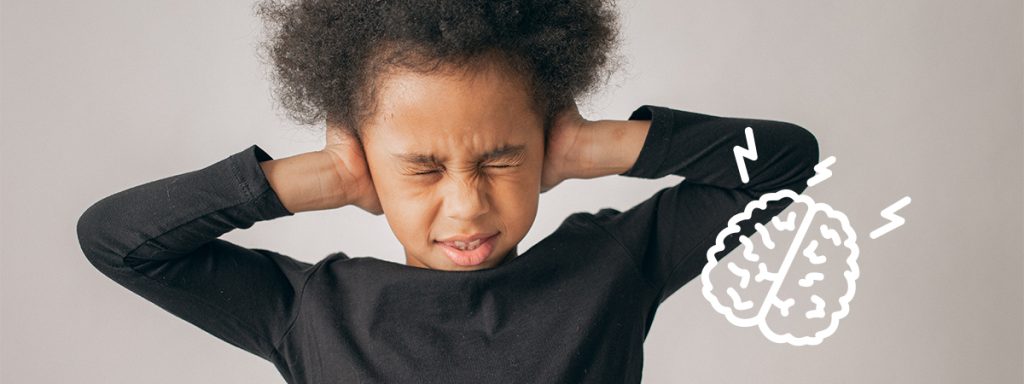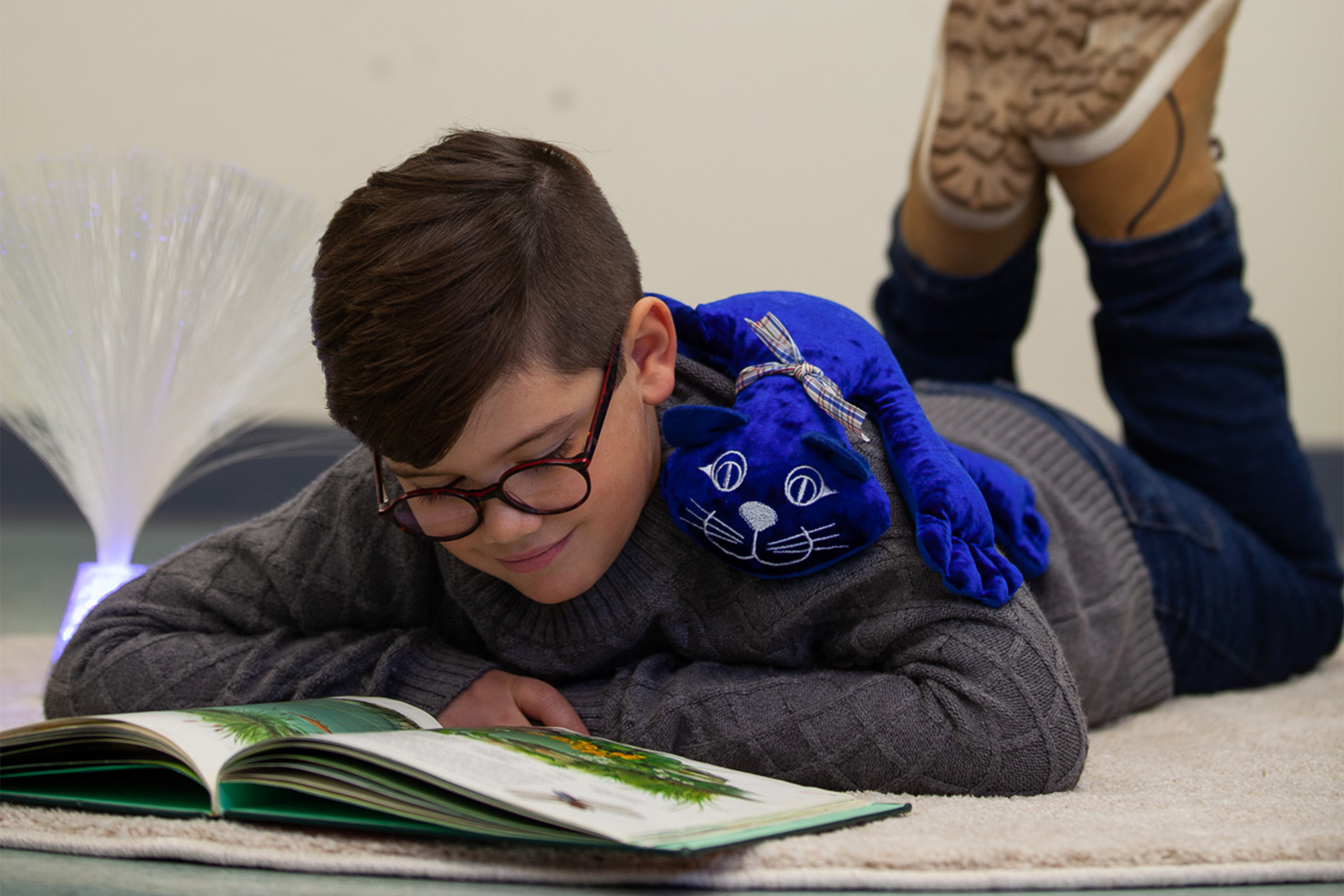The school and classroom provide a wealth of sensory information. Whether or not your students have special needs, processing sensory information can be a real challenge and also impact their behavior (e.g. difficulty paying attention, sitting still, working cooperatively with others, etc.).
Sensory processing difficulties arise when the brain can’t sort, organize, analyze, or integrate sensory messages
It’s like a “traffic jam” in the brain, with a few snippets of sensory information “stuck in circulation”. When this happens, certain parts of the brain don’t receive the sensory information they need to do their job.
Providing a sensory space helps students to calm down and is a way to avoid disorganization. It’s a simple solution for improving social-emotional behaviors and beneficial for cognitive development.

What is a sensory corner?
A sensory corner is a designated area inside your classroom that is dedicated to supporting the sensory development of all students. It allows the child to take refuge there completely independently. Their withdrawal into this space helps them regulate their emotions and energy level in order to be more available to learn and interact with others.
A sensory space stimulates the primary senses; sight, hearing, smell, touch, vestibular and proprioception without creating overload because the senses are chosen on a voluntary basis.
The 7 senses
1- Sight: anything related to what we see. Typical needs include sensitivity or overt attraction
to light and overly busy environments.
2- Touch: refers to touch and feeling of different textures. Some may be uncomfortable or pleasing on the body.
3- Oral: associated to the mouth. Specific tastes and texture preferences and chewing are common needs.
4- Auditory: related to what we hear. Some noises are overwhelming or comforting. Sometimes the brain has issues processing what is heard.
5- Olfactory: everything we feel. Some may have trouble distinguishing smells or may be hypersensitive to smells.
6- Proprioceptive: helps to understand where our body parts are in relation to each other and estimate how much force to use in different activities (think of picking up a feather versus a brick).
7- Vestibular: this sense refers to balance and coordination of the body, it is responsible for controlling our muscles, and most of our reflexes.
The benefits of a sensory corner
These very precious moments, lasting at least 15 minutes, improve mood management by taking care of one’s emotions, increase the feeling of security, and help reduce agitation and apathy (lack of energy). No wonder they allow the improvement of attention and quality of concentration.
Regulating our senses is important in maintaining our mental and physical well-being and self-esteem. The sensory space allows for wonderful one-on-ones or supports a moment of guided learning, if the space is sufficient to accommodate the adult and child.
How to design a classroom sensory space
-
It must be welcoming, comfortable and a defined space. The area has boundaries and is large enough to accommodate at least one seat (armchair, cushion, carpet, etc.).
-
Make sure the child will be isolated from ambient noise or the hallway.
-
Make sure you can adjust the light intensity or filter it. Some children will seek intense light while others will benefit from dim lighting.
-
Try to find a corner of the class where the student can have some privacy, out of sight of their peers. To enclose this space, you could use a curtain or furniture such as a bookcase or shelf.
-
Ideally, provide storage for the items or equipment that your corner will offer. The space should not be overloaded with things.
The objective is to be able to immerse yourself in a “cocoon-bubble” atmosphere in order to experience better sensory stimulation and enjoy all the benefits.
The effectiveness of a sensory corner has nothing to do with your allocated budget. It’s therefore not necessary to invest in expensive and sophisticated equipment.
What equipment should you provide in your sensory corner?
Your sensory corner can evolve over time and according to the needs of your students. Here are some suggested items that can stimulate the senses.
You could display or make available inspirational thoughts, relaxing music, pictures to colour, breathing strategies, a timer to give the child perspective about time.
Hearing:
-
Earphones and radio
Smell:
-
An accessory or cushion that you can put a few drops of essential oils on (ex: lavender)
-
Small cotton sachet (for the bottom of a drawer) with different smells
Oral:
-
Chewy tools (topper for pencil, pendants, gym)
-
Blowing games
-
Blowing cotton balls with a straw
Touch:
-
Manipulative tools such as stress balls, fidgets
-
Homemade sheet/board with different textures on it (sandpaper, fur, silk, feathers, etc.)
Sight:
-
Lamp (Jellyzen, Bubblebeam, Wavewand, Bubblebloom, etc.)
-
Mini flashlight, mini battery-operated candle
-
Homemade glitter bottle
Vestibular (balance and movement):
-
Rocking chair
Proprioception:
And the most important…
Once your sensory space has been established, take the time to show it to your students and teach how to use it, when, and why so that they understand the purpose of this space.
It’s also important to display the tools and resources available in the space. Don’t hesitate, for example, to demonstrate breathing techniques in a large group so that they know how to repeat them when alone.
Having a space like this is a great way to implement social-emotional learning strategies in your classroom.
And now, play on!

fdmt team
Website : www.fdmt.ca
Facebook : fdmtOfficiel


Leave A Comment